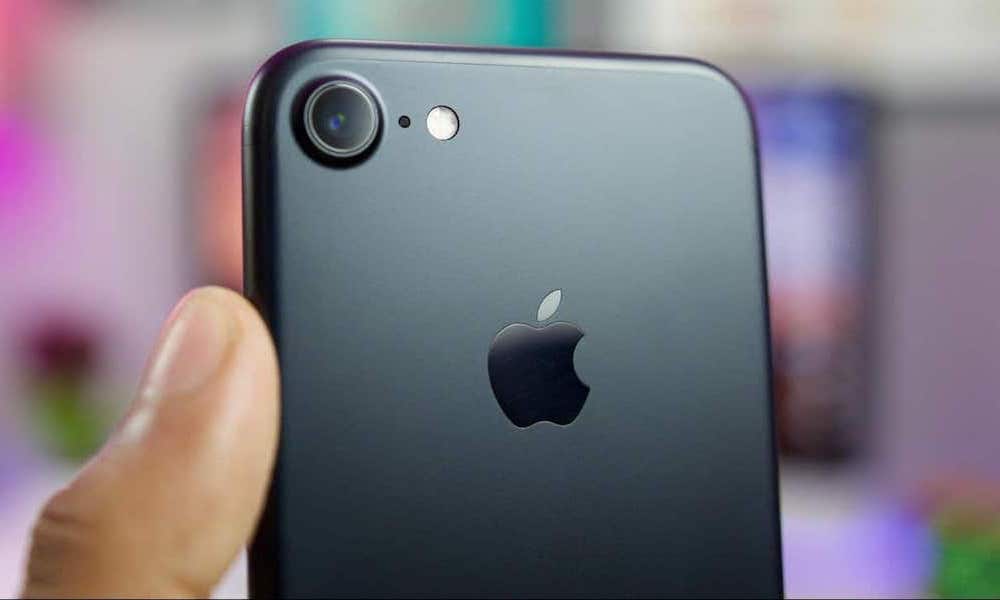
The World’s Most Popular Phone in 2019 Will Probably Surprise You

FCC to Investigate After iPhone 7 Tests Above Legal Radiation Level Limits

5 Ways the iPhone 7 Is a Better Buy Than the New iPod touch
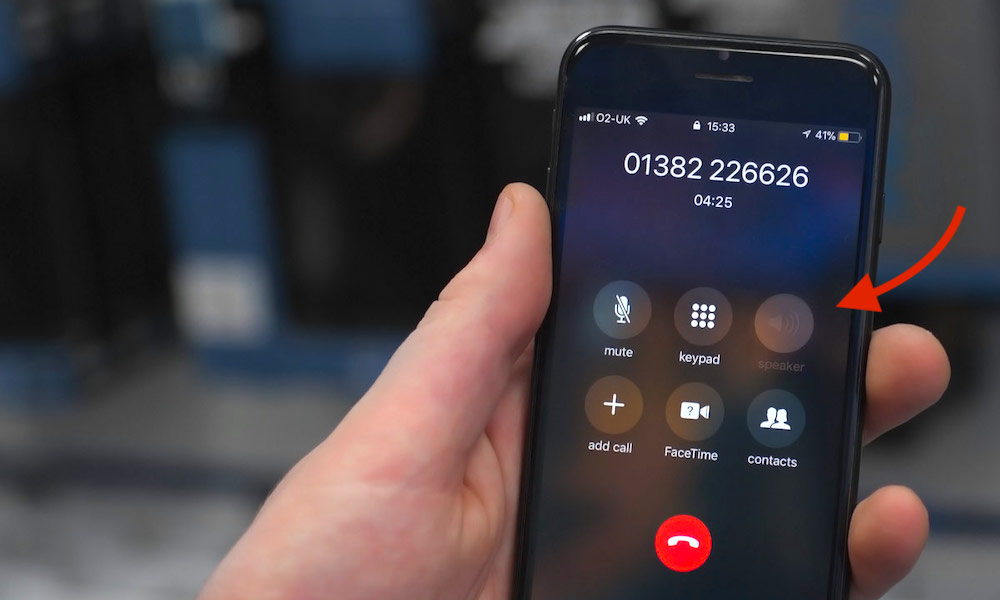
Loop Disease? 5 Things to Know About iPhone 7’s Newest Problem
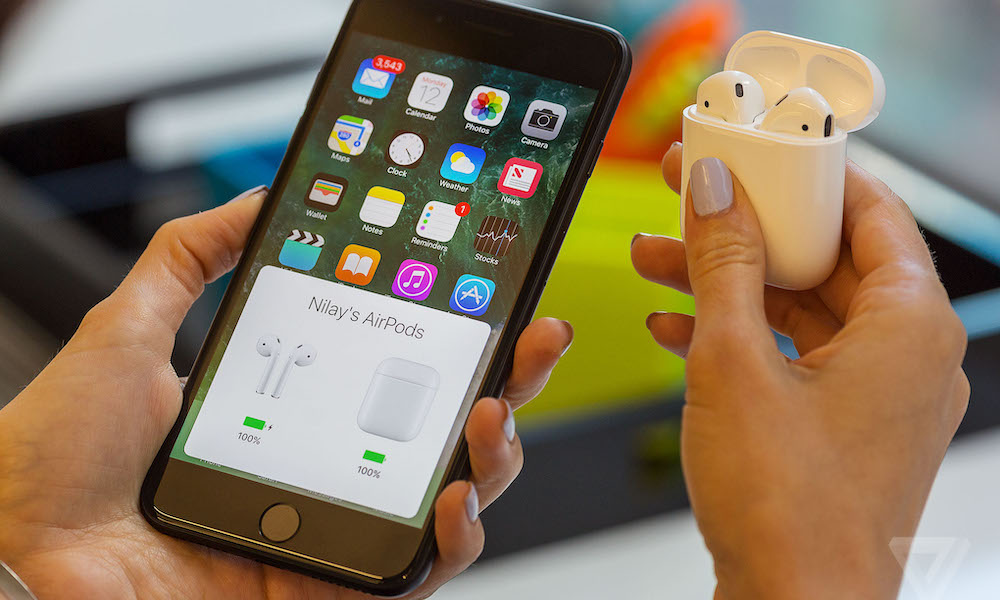
7 Smart Reasons to Buy an iPhone 7 Plus Instead of the XR

iPhone 7 Plus: Reasons to Keep Your Device and Skip the New iPhone XR
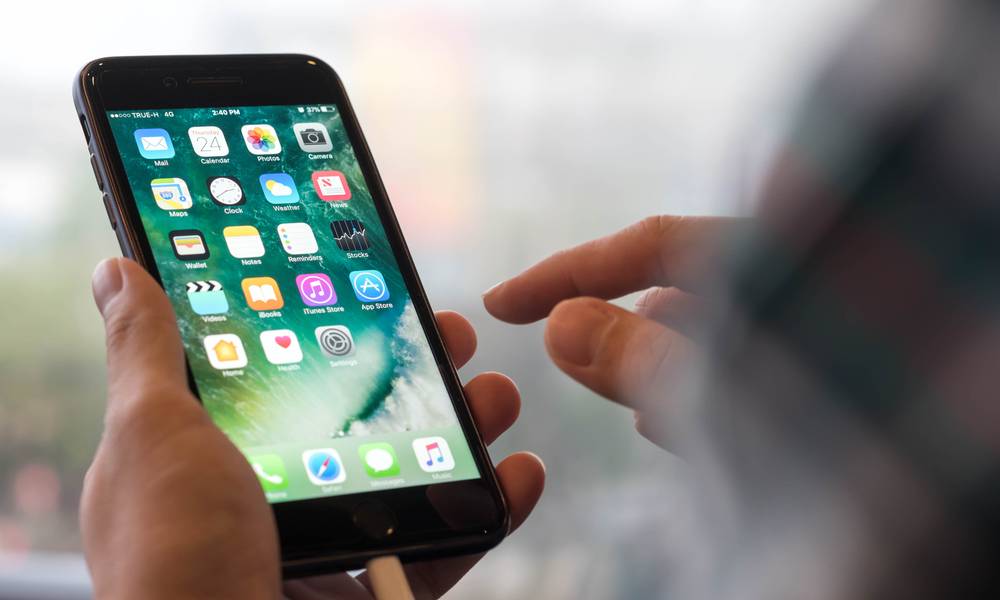
iPhone 7 Prompting You to Sign into Random Apple IDs? Here’s the Fix
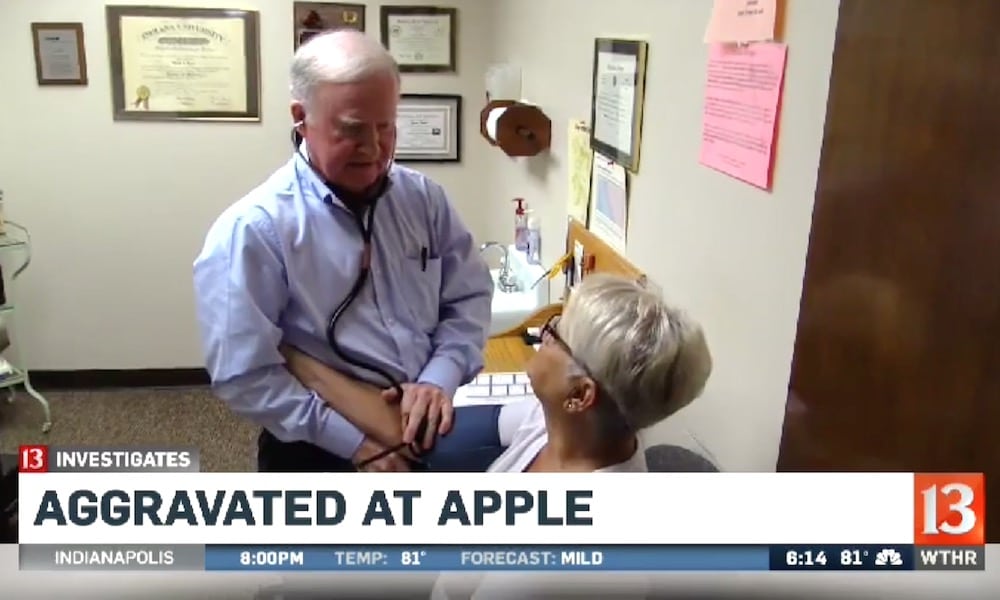
Indiana Doctor Sues Apple for $200 over iOS’ Supposed Devious Trickery

Apple’s Humorous ‘Barbers’ iPhone 7 Plus Commercial Wins Prestigious Award

Apple Confirms Microphone Issue with iPhone 7 and 7 Plus in iOS 11.3

Thief Will Serve Life in Prison After Murdering a Woman for Her iPhone 7
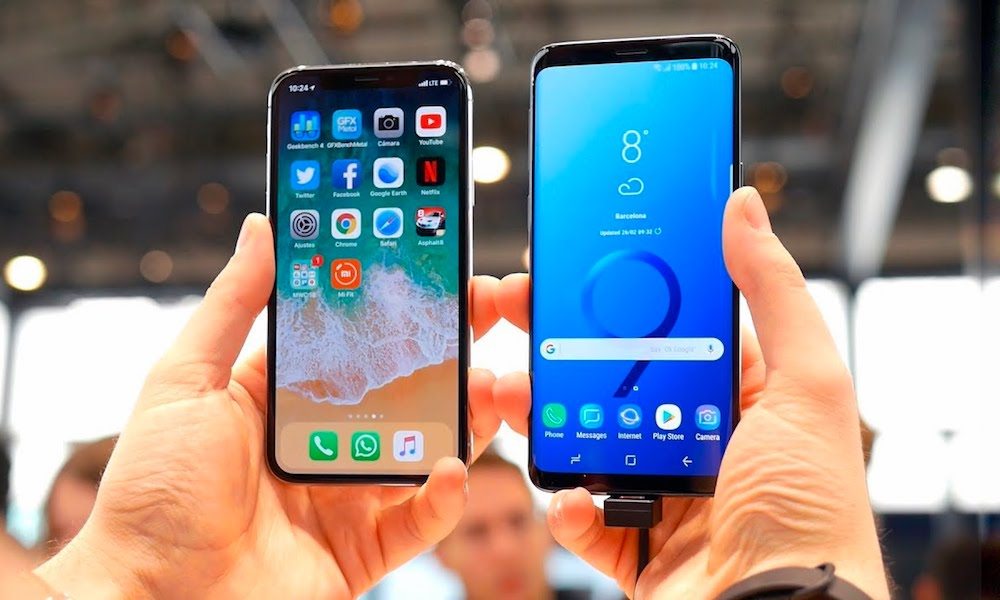
iPhone 7, 8, X Dominate Samsung Galaxy S9 in New Speed Tests
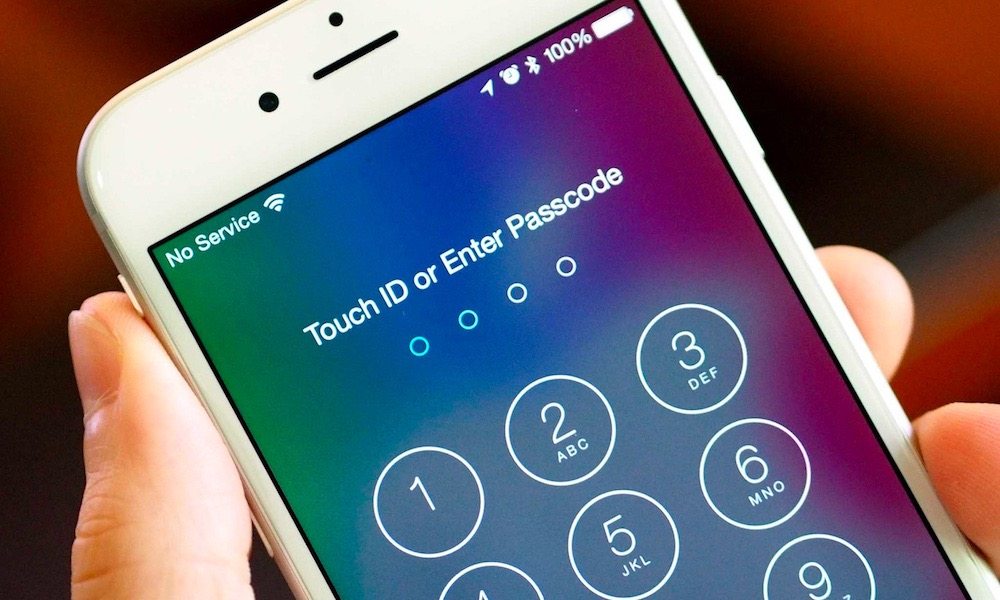
Apple Offers Free Repair for iPhone 7 Devices with ‘No Service’ Bug

Apple’s Refurbished iPhone 7 Devices Will Save Buyers up to $80

New Data Says Apple’s Selling More iPhone 7s Than iPhone 8s

28 Year Old London Charity Worker Murdered for His iPhone 7
iPhone 7 Design
The dimensions of the iPhone 7 and 7 Plus are nearly identical to the dimensions of the iPhone 6s and 6s Plus, with both of the newer models clocking in at a bit lighter weight.
iPhone 6s – 138.3 x 67.1 x 7.1 mm, weight 143g
iPhone 7 – 138.3 x 67.1 x 7.1mm, weight 138g
iPhone 6s Plus – 158.2 x 77.9 x 7.3 mm, weight 192g
iPhone 7 Plus – 158.2 x 77.9 x 7.3mm, weight 188g
As far as design goes, there were no surprises with the release of the iPhone 7. Many of the updated design aspects introduced with the iPhone 7 had already been correctly predicted and leaked in the months leading up to the release.
The most obvious design change for the iPhone 7 is also the most controversial one. Rumors of Apple ditching the traditional 3.5mm headphone jack have circulated the web since last fall, and the rumors were proven true when the iPhone 7 was released. During the introduction of the iPhone 7, Apple’s Senior VP of Worldwide Marketing Phil Schiller pointed out that only Apple has the “courage” to make such a bold move, and that the “ancient, analog, single purpose” 3.5mm connector simply took up too much room in such a small device packed with so much new technology.
Aside from the lack of a traditional headphone jack, the iPhone 7 and iPhone 7 Plus were completely redesigned with water and dust-resistant enclosures. A redesigned home button also fulfilled several rumors that were prevalent on the web – it is now a touch-sensitive, solid state, fixed button that integrates with a new Taptic Engine. The so-called “antenna lines” that many found so aesthetically offensive on the last several iterations of the iPhone have also been redesigned as was seen in previously leaks, now sitting subtly across the top and bottom edges of the device. Lastly, Apple introduced several new colors for the iPhone – a high-gloss and very stylish “Jet Black” finish and more matte “Black” finish join the existing Gold, Silver, and Rose Gold finishes. There was no mention, however, of the oft-rumored “Deep Blue” finish that made rounds on the web before the release.
iPhone 7 Features
On top of the newfound water resistance, the iPhone 7 and 7 Plus both feature several attractive new features to differentiate the new models from the iPhone 6s and 6s Plus.
The new Retina HD display, which Schiller claimed to be the best display on any smartphone, is 25% brighter than previous displays with a wide color gamut and cinema standard colors, and contains the same 3D Touch layer found on the displays in the 6s and 6s Plus. The iPhone 7 and 7 Plus also both feature stereo speakers – one on bottom and one on top – with a “huge jump forward in audio quality”, twice the volume, and an increased dynamic range.
The new A10 Fusion chip in both models of the phone are some of the most powerful chips ever put in a smartphone. The The 64-bit, four-core CPU contains 3.3 billion transistors. 2 “High Performance” cores offer 40% faster processing than Apple’s A9 chip, and 2x faster processing than the A8 chip – for reference, the High Performance chips process 120x faster than the chip on the original iPhone. The other 2 “High Efficiency” cores run at 1/5th the power of the High Performance cores, and are utilized for low-power tasks such as checking email. The cores are controlled by an Apple-designed performance controller, resulting in increased performance and better battery life. The chip also features a new GPU, which is 50% faster than the GPU found on the A9 chip, and 3x faster than on the A8 chip.
Perhaps the biggest improvement over the iPhone 6s and 6s Plus comes in the form of new cameras for the iPhone 7 and iPhone 7 Plus. The new iPhone 7 camera features optical image stabilization, a wider f/1.8 aperture lens that allows in 50% more light (for increased low light performance), a new 12-megapixel high speed sensor that, according to Apple, shoots 60% faster and 30% more efficiently than its predecessor, and a quad-LED True Tone flash that produces 50% more light, and includes a “flicker sensor” that works better in environments with artificial light. Holding true to the rumors, the iPhone 7 Plus features two 12 MP cameras – one featuring a wide angle lens and one featuring a telephoto lens, allowing true optical zoom up to 2x and software zooming up to 10x. The dual-lens camera is also capable of producing photos with a “shallow depth of field”, the photos you’ve probably seen with incredible clarity of the foreground subject, and a beautifully-blurred background, often called a “bokeh” effect. The ability to shoot such photos is typically only found on high-end cameras, but will be available soon on the iPhone 7 Plus with a new “portrait” mode in the camera. As Schilling pointed out at the end of his demo, the new camera on the iPhone 7 Plus is the best camera ever created for a smartphone, and will likely be, for many users, the best camera they’ve ever owned.
iPhone 7 Battery
Due to larger batteries and the efficiency of the new A10 Fusion chip, the iPhone 7 and iPhone 7 Plus deliver, according to Schiller, the “longest battery life ever in an iPhone.
According to recent reports, the iPhone 7 features a 1960 milliamp-hour battery over the iPhone 6s’s 1715 milliamp-hour battery, and the iPhone 7 Plus features a 2900 milliamp-hour battery over the iPhone 6s Plus’s 2750 milliamp-hour battery. According to Schiller, the iPhone 7 will provide, on average, 2 hours more battery life than the iPhone 6s, and the iPhone 7 Plus will provide an extra hour of battery life over the iPhone 6s Plus on average.
As reported by Apple:
Up to 2 hours longer battery life than iPhone 6s
Talk time (wireless): Up to 14 hours on 3G
Standby: Up to 10 days
Internet use: Up to 12 hours on 3G, Up to 12 hours on LTE, Up to 14 hours on Wi-Fi
Wireless video playback: Up to 13 hours
Wireless audio playback: Up to 40 hours (Up to 1 hour longer battery life than iPhone 6s Plus)
Talk time (wireless): Up to 21 hours on 3G
Standby: Up to 16 days
Internet use: Up to 13 hours on 3G, Up to 13 hours on LTE, Up to 15 hours on Wi-Fi
Wireless video playback: Up to 14 hours
Wireless audio playback: Up to 60 hours
AirPods, EarPods, and Adapters
Although Apple has infamously eliminated the traditional headphone jack on both the iPhone 7 and iPhone 7 Plus, Apple still left users with several options to utilize headphones with the new devices. Included in the box with both devices will be a small 3.5mm to Lightning adapter, so users with any headphone that connects via the standard 3.5mm plug will be able to use them with the phone. Also included in the box will be a pair of Apple’s standard EarPods, which now terminate in a Lighting connector as opposed to the 3.5mm plug.
Users looking for a more luxury option can utilize any of the growing number of Lighting-enabled or Bluetooth-compatible headphones out on the market right now. Joining that market later this fall will be the AirPods that Apple introduced alongside the iPhone 7. Rumored since this past April, the AirPods offer some pretty impressive functionality when paired with an Apple device. The AirPods charge in a custom charging case, and pair with the iPhone and Apple Watch (as well as switch between the two) incredibly easily – simply open the case in close proximity and tap the “connect” icon that appears on your device, and pairing occurs immediately. A proprietary “W1” chip inside the AirPods contains dual optical sensors and accelerometers that detect when each AirPod is in your ear – the “always on” AirPods will only play while in your ear, and pause when they’re taken out (even allowing functionality for one AirPod independently of the other). According to Apple, “an additional accelerometer in each AirPod detects when you’re speaking, enabling a pair of beam-forming microphones to focus on the sound of your voice… filtering out external noise to make your voice sound clearer than ever before.” On top of that, a double tap on the AirPods will activate Siri for a variety of commands, including volume adjustment or track skipping. The AirPods will reportedly last an impressive five hours on a single charge, and the charging case offers an additional 24 hours of battery life before it, too, must be charged.
The AirPods will be available later this fall for $159. Alongside the AirPods, Apple also briefly introduced several new pairs of Beats headphones, including the affordable and comfortable for everyday use Beatsx, as well as the Beats Solo3 Wireless and Powerbeats3 Wireless – higher end headphones that will also utilize the W1 chip.
Still on the list of complaints of iPhone users, however, is the fact that users won’t be able to listen to music via Lightning-enabled headphones while charging their phones. Perhaps this is an issue Apple will address at a later date.
iPhone 7 Storage
Before the release of the iPhone 6s, many users expected Apple to bump up the storage on their entry-level phones. With more advanced technology in our phones, 16GB just doesn’t seem to cut it these days. Faster processors allow developers to create more intense and feature-rich apps that tend to take up more space. And more advanced cameras take higher-resolution photos and videos, which also take up more space – add in the iPhone’s Live Photos feature, and that 16GB is gone rather quickly. With no expandable storage on the iPhone, users previously only had the option of upgrading to a (much pricier) 64GB device, or shelling out for more iCloud storage (and possibly a more expensive data plan).
Thankfully, Apple finally did away with the 16GB storage option for the iPhone 7 and 7 Plus. Although the iPhone still doesn’t allow expandable storage, the three teirs of storage options are much more generous than before. The entry level iPhone 7 and 7 Plus devices have 32GB of storage. The next model up features an impressive 128GB of storage, and for those of you who are inclined to keep every photo, video, and song you’ve ever seen or heard on your phone, a model with an astonishing 256GB of storage is also available.
iPhone 7 LTE Speeds
Another very important addition to the iPhone 7 and iPhone 7 Plus is the inclusion of new, faster modems made by Qualcomm and Intel. Although Apple did little to hype up this new addition, the new modems are likely to significantly bump up download speeds. Apple claims that the new modems are capable of download speeds up to 450 Mbits/second – a 50% jump over speeds achieved by the iPhone 6s. The new modems achieve these speeds via a technique called “carrier aggregation”, which combines the signals from several different wireless bands to transmit data at faster rates.
It’s important to note that the phones are unlikely to reach these speeds in normal conditions – most carriers don’t even offer those types of speeds yet. But users can rest assured that as different carriers begin to offer more carrier aggregation and higher speeds, their phones are capable of taking advantage.
Also important to note, however, is that Apple’s new choice in modems may result in some compatibility issues for some users. According to CNET, the iPhones featuring Intel modems “don’t work on an older network technology called CDMA used by Verizon and Sprint.” And Apple warns on its website that “The iPhone for AT&T and T-Mobile does not support CDMA and will not work on Sprint or Verizon Wireless.” If you’re thinking about changing carriers in the near future, you may want to take this fact into account before you purchase your new iPhone.
iPhone 7 Carrier Availability
The iPhone 7 and 7 Plus are currently available for pre-order on all major carriers. Pre-orders will begin shipping on Friday, September 16. Verizon, T-Mobile, AT&T, and Sprint are all offering the devices with varying payment plans. For those of you that didn’t jump right on the pre-order, though, many models are already sold out. You’ll have to stay up to date on the availability for each model on your specific carrier to get a hold of certain models – most Jet Black iPhone 7 models are currently facing a 2-3 week delivery date. For the two major telcos, AT&T and Verizon, find out about current promotion by visiting our related post.
Is the iPhone 7 Unlocked?
Purchasing an iPhone 7 or iPhone 7 Plus from your carrier allows you to take advantage of certain deals and payment plans each carrier has set up. However, purchasing your phone from your carrier also typically locks you into that carrier for the life of your phone (Verizon excluded). Users looking to shop around carriers can take advantage of the iPhone Upgrade Program, which was introduced last year and allows you to spread the cost of a brand-new, fully unlocked iPhone over 24 monthly payments. According to PCMag, however, the iPhone 7 and 7 Plus devices that Verizon is selling are also factory unlocked – “Everyone… who wants an all-carrier-compatible phone should get the Verizon unit, which is factory unlocked.”
If you’re looking to shop around carriers, keep in mind that iPhone units that are using Intel modems – i.e. the models sold by AT&T and T-Mobile – will not work on Verizon or Sprint. The units sold with Qualcomm modems, however, (Sprint, Verizon, Japanese, and Chinese models) are compatible with all major US carriers.
iPhone 7 Price
Pricing for the iPhone 7 and iPhone 7 Plus in the US is as follows.
32GB
128GB
256GB
iPhone 7
$649.00
$749.00
$849.00
iPhone 7 Plus
$769.00
$869.00
$969.00
However, keep in mind that there are several ways to go about getting a new iPhone. As previously mentioned, Apple’s iPhone Upgrade Program is a great way to buy a new, unlocked iPhone 7 or 7 Plus without dropping down several hundred dollars up front. The iPhone Upgrade Program spreads the cost of a new iPhone over 24 months, includes AppleCare+ insurance, and allows you the option to upgrade when new iPhone models come out after 12 payments. Payments start as low as $32.41 per month for the 32GB variant. Already have an older iPhone that’s completely paid for? Take a look at Apple’s iPhone Trade-Up Program for a credit toward a new iPhone. All four major carriers are also offering a variety of payment plans and deals, which, especially as many carriers are releasing new data plans, can get quite confusing. Contact your preferred carrier for more information, or you can check this handy guide from Gizmodo.
What’s in the iPhone 7 Box?
iPhone with iOS 10, EarPods with Lightning Connector, Lightning to 3.5 mm Headphone Jack Adapter, Lightning to USB Cable, USB Power Adapter, Documentation
*iOS 10 includes AirDrop, AirPlay, AirPrint, Control Center, Handoff, HomeKit, iCloud, iCloud Keychain, Multitasking, Night Shift.
